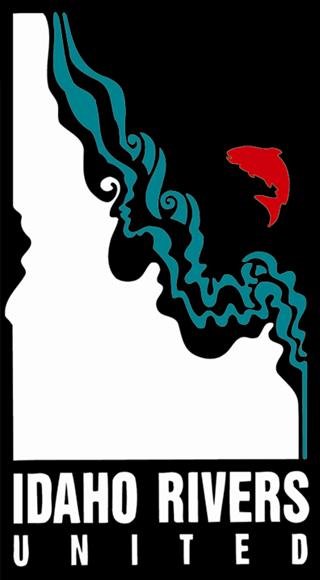These places are worth protecting: Caitlin Straubinger, IRU Staff
A few weeks ago, I drove up the windy South Fork Salmon road, following the curve of the river to a campsite on the riverbank, nestled in the pines. My colleagues and I waded in the cool water, chatted around a quiet campfire, and checked out the Neowise comet in the astonishingly dark sky.
We woke early the next day, anxious to start making our way to our destination: the historic Stibnite mine site. I was already awed by this part of Idaho I had never explored before, but had no idea the breadth of surprises this pocket of forest had to share with us.
We began following the East Fork of the South Fork of the Salmon River past deep, clear pools and logjams in the river from the spring earthquake, where bull trout were almost certainly finding refuge. We continued past Yellow Pine, marveling at the community golf course, until we entered Midas Gold territory.
We knew we had arrived by the “incident response boxes” we began passing with more frequency, the roadside muster points, and the signs instructing us not to wander.
We pulled over at the historic Yellow Pine Pit and surveyed the eroded hillside and deep tailings pond, indicative of years of past mining in the area. Midas Gold strategically created a “viewing area” surrounded by placards touting their plans of environmental restoration (after expanding and re-mining, of course). We all questioned: is it worth the risk? The risk of leaching, fish endangerment, etc
We spent the day continuing through the Midas site and beyond. Wildflowers bloomed in abundance alongside the road, including the most vibrant fuchsia Indian Paintbrush any of us had ever seen. We had a picnic at the Thunder Mountain overlook and took turns with binoculars marveling at a mountain goat nanny and kids on a neighboring ridge in the Frank Church Wilderness.
That afternoon after stopping for libations in Yellow Pine, our adventurous conservation associates, Reese and Stephen, kayaked a stretch of the East Fork back towards camp. Along with our communications associate, Ren, I opted for a lesson in fly casting from IRU director Nic. After a few warm up casts, I caught my first ever fish on fly, a small (errr... HUGE!?) rainbow trout. I proceeded to snag willow branches for the remainder of our trip, but the thrill of pulling in that first fish has sustained me since then.
I returned to the same area the following weekend, desperate to share this special place with my partner before it’s too late. We hiked to an alpine lake, picked huckleberries, and gave our puppy swimming lessons in an eddy along the East Fork.
In reflecting on both of these weekends, I wonder how my experience would be different if plans for the mine move forward.
Would it be enjoyable to fish these special ripples while mining trucks haul supersized equipment up and down the road? Will we feel safe eating huckleberries off the bush, knowing that upstream cyanide is being used to sift through ore? Will we still see mountain goats and bald eagles and pika and marmots?
In the recently released Draft Environmental Impact Statement for the mining project, Midas conceded to leaving the road through the site open to the public. Will we even want to visit? We are so fortunate in Idaho to have access to these incredible places, and I think they are worth protecting.

